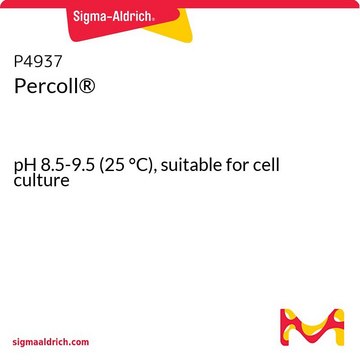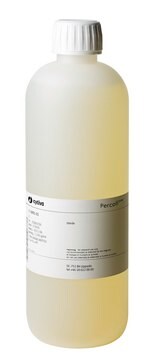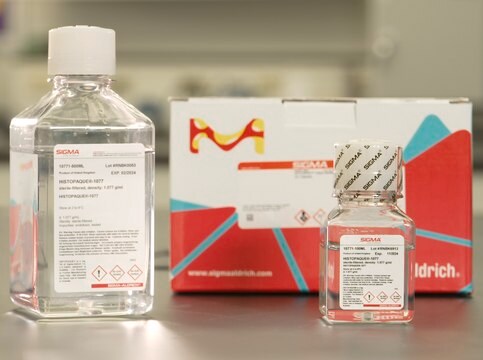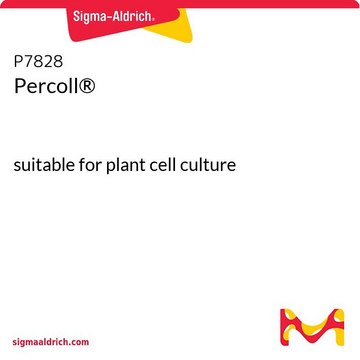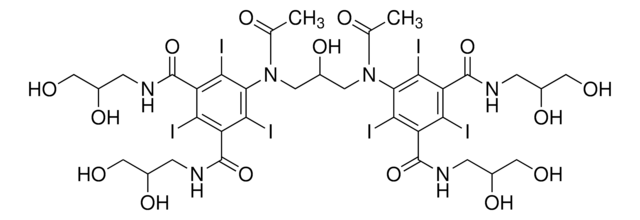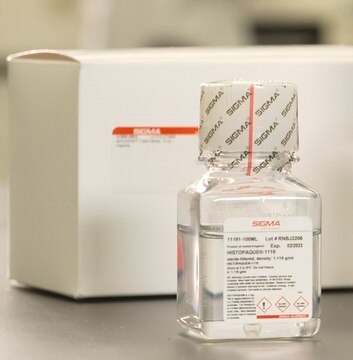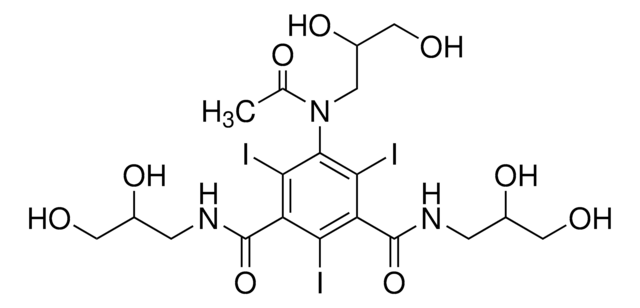Kluczowe dokumenty
P1644
Percoll®
pH 8.5-9.5 (20 °C)
Synonim(y):
Percoll Density Gradient Media
About This Item
Polecane produkty
sterylność
aseptically filled
Poziom jakości
Formularz
colloidal ((Colloidal solution of silica coated with polyvinylpyrrolidone (PVP)) )
metody
cell culture | mammalian: suitable
kolor
clear colorless to faint yellow
pH
8.5-9.5 (20 °C)
Zastosowanie
hematology
histology
temp. przechowywania
2-8°C
Szukasz podobnych produktów? Odwiedź Przewodnik dotyczący porównywania produktów
Opis ogólny
Zastosowanie
Informacje prawne
produkt powiązany
Kod klasy składowania
10 - Combustible liquids
Klasa zagrożenia wodnego (WGK)
WGK 3
Temperatura zapłonu (°F)
Not applicable
Temperatura zapłonu (°C)
Not applicable
Środki ochrony indywidualnej
Eyeshields, Gloves
Wybierz jedną z najnowszych wersji:
Masz już ten produkt?
Dokumenty związane z niedawno zakupionymi produktami zostały zamieszczone w Bibliotece dokumentów.
Klienci oglądali również te produkty
Produkty
Wirowanie umożliwia oddzielanie cząstek poprzez sedymentację. Dowiedz się, jak oddzielić cząstki za pomocą wirówki i jak wykorzystać prawo Stokesa do obliczenia prędkości sedymentacji.
Protokoły
Aby przygotować gradient Percolla, osmolalność Percolla musi być dostosowana za pomocą soli fizjologicznej lub pożywki do hodowli komórkowej, aby Percoll był izotoniczny z fizjologicznymi roztworami soli.
Nasz zespół naukowców ma doświadczenie we wszystkich obszarach badań, w tym w naukach przyrodniczych, materiałoznawstwie, syntezie chemicznej, chromatografii, analityce i wielu innych dziedzinach.
Skontaktuj się z zespołem ds. pomocy technicznej